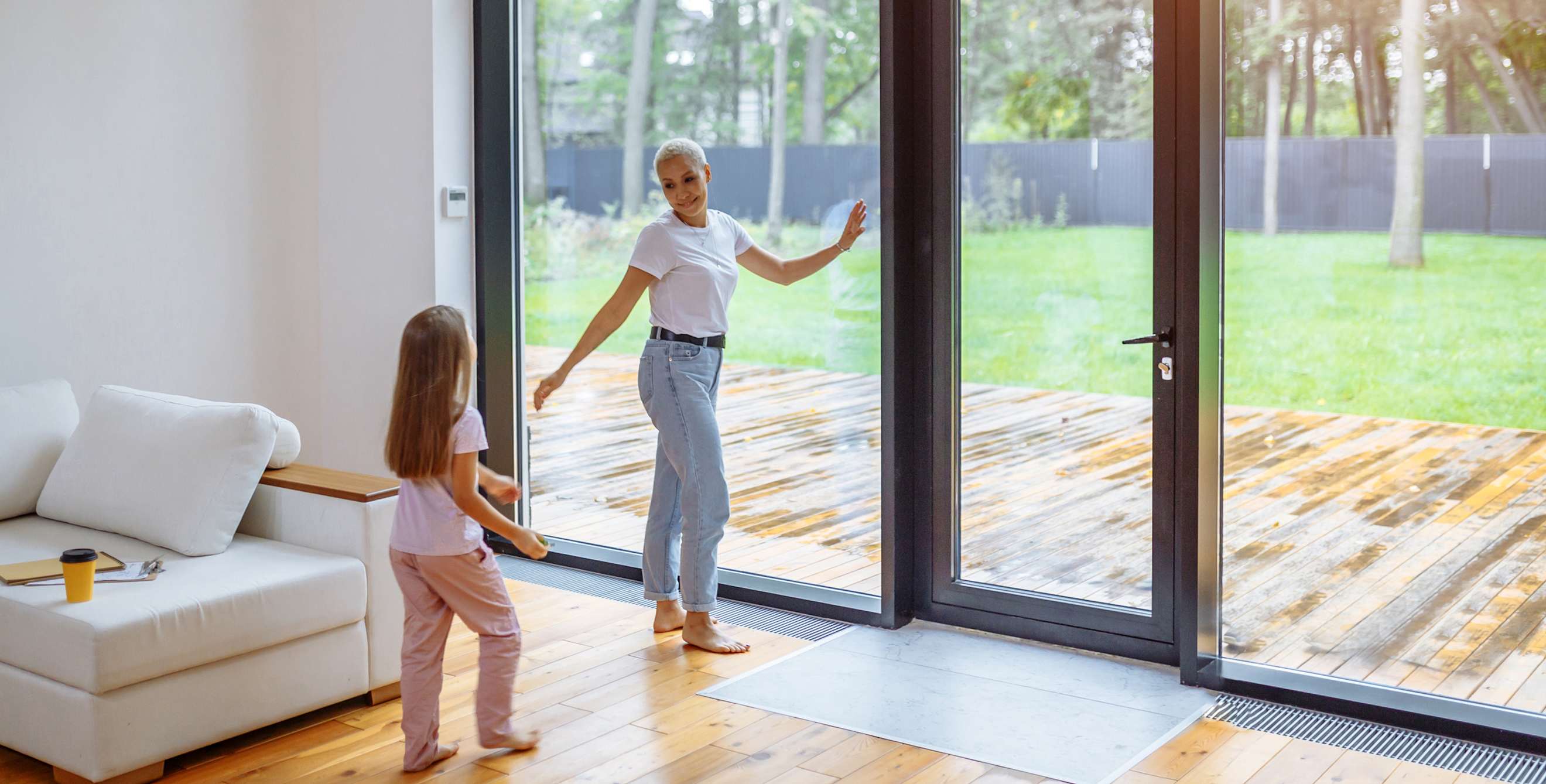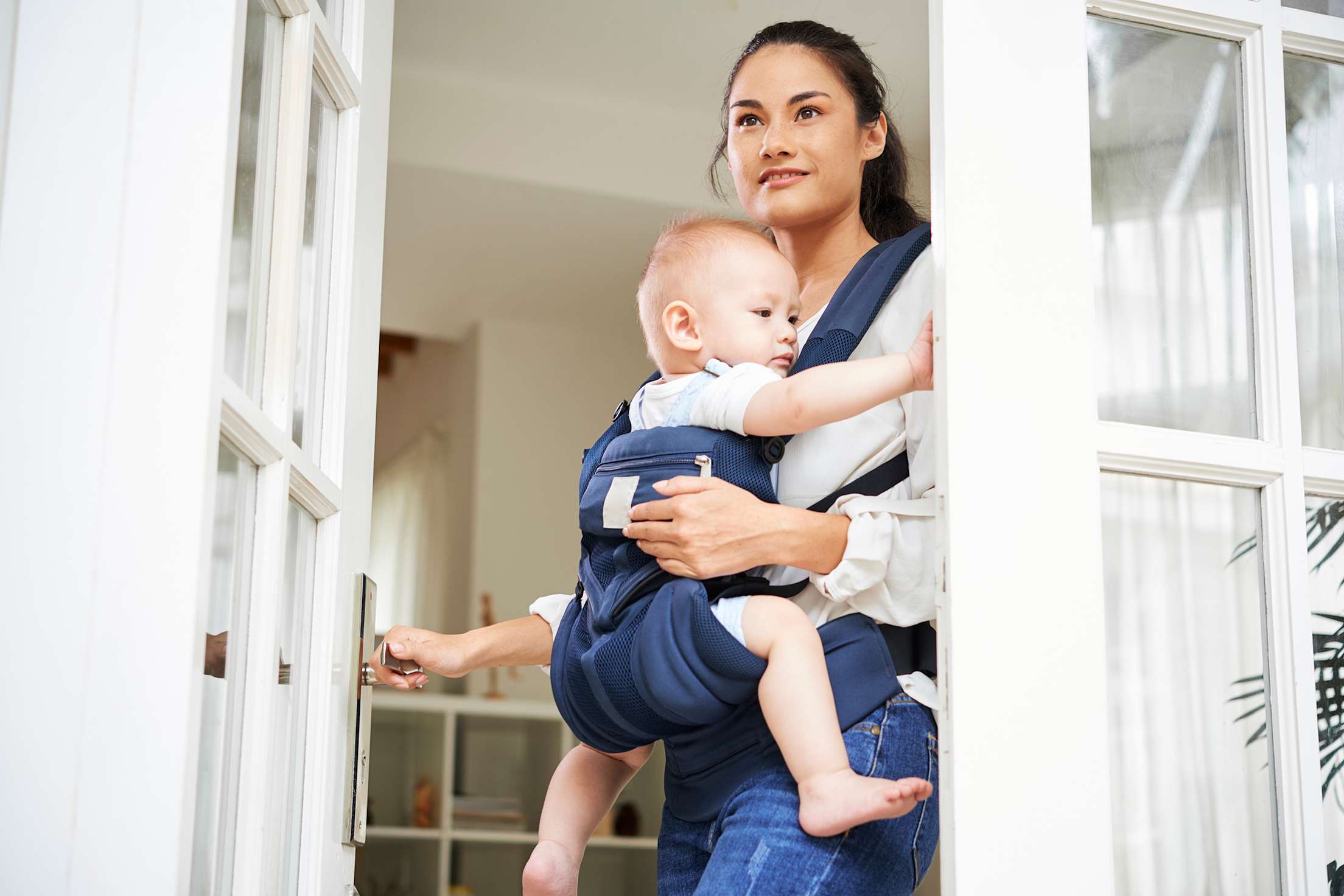
Simple Steps to Create a Home Fire Escape Plan
Have an action plan to help keep your family safe if a fire starts.

Most people don’t think their homes will be engulfed by a fire. However, statistics show it takes only two minutes for a flame to turn into a dangerous fire, and only five minutes for the fire to swallow the entire house. Creating a home fire escape plan could potentially save you, your family, and your pets from life-threatening injuries or death.
Follow this step-by-step guide to create a comprehensive fire escape plan.
1. Create a basic layout of your home.
Sit down with every member of your household and have both adults and kids draw the floor plan of the home. Walking through each room can be a helpful way for the entire family to observe fire exits and mark them down. Any paper will do, but this printout from the American Red Cross makes it easy to map out your home.

2. Identify which exits to use and make sure they allow for an easy escape.
“When creating an escape plan, identify at least two ways out for each room on every level of your home,” says Kidde fire safety educator Sharon Cooksey. She also encourages family members to check windows and doors. “Make sure you can open all doors and windows in homes, and locks and pins should open easily.”
Homeowners should check that windows haven’t been nailed closed or sealed shut with paint. If they have, arrange for someone to break the seals around your home and remove any nails. “Additionally, make sure you have a clear exit path and there are no obstructions that could prevent you from escaping,” says Cooksey. It is important to note the best route to escape, especially from the place where you sleep, and always have a backup route.
3. Assign helpers.
Determine who will assist children, people with mobility limitations, and pets to ensure the entire household is accounted for and no one is left behind. Have a backup person in case the assigned person is away in the event of a fire. When divvying up responsibilities, keep in mind where everyone is most likely to be (e.g. whose bedroom is next to the dog crate or grandma’s room?), and think through your pet’s favorite hiding spot where they are likely to retreat when a smoke alarm goes off.

4. Position safety equipment.
- Have a safety ladder in each room of the second floor.
- Consider installing a fire safety box. This will keep important paper documents, such as birth certificates, medical documents, social security cards or passports, safe from the fire. Install it in the garage or secure it against a wall.
- Keep a mini kit at the foot of your headboard. The American Red Cross recommends keeping a sturdy pair of shoes, a flashlight, and an extra pair of glasses in the kit. Also, consider having cold fire extinguishers, smoke masks, whistles, and vented safety goggles handy throughout the home.
5. Ensure smoke alarms are properly installed.
Alarms should be installed on every level of the home, in every bedroom, and outside each sleeping area to ensure everyone receives notification as early as possible to allow enough time to escape. Consider using interconnected alarms: if one sounds, all alarms throughout the home sound in unison to alert everyone sooner. If you rent, ask your landlord to install any missing smoke alarms and carbon monoxide detectors.
Smart Tip: Smoke alarms should be tested at least once a month. According to the National Fire Protection Association, smoke alarms should be replaced at least every 10 years.
6. Know who to call.
Teach everyone to call 911 as soon as they get outside. Katie Belfi, an emergency management expert, also encourages family members to memorize the number of a friend or neighbor they can call in an emergency should they need help.
Smart Tip: Double-check that your house or unit number can be seen from the street, even in the dark, so first responders can find you quickly.

7. Choose a meeting place that’s a safe distance from your home.
Practice meeting at this place beforehand. Also, children should know what to do when a fire or smoke alarm rings and no adult is around. Instruct kids not to reenter a burning building under any circumstances.
8. Practice your plan.
- Belfi suggests conducting fire drills at different times of the day and practicing various escape routes. Doing this will build muscle memory for your family members so they won't have to think about what to do during a fire and will be able to move quickly and confidently.
- Remind kids never to hide during a fire.
- Kids and adults should be reminded of drop, crawl, and roll to escape exits.
- Feel doors for heat and look for smoke.
- Close doors behind you to stop the spread of the fire.
Whether you own or rent your home, protect your personal property with AAA Insurance.